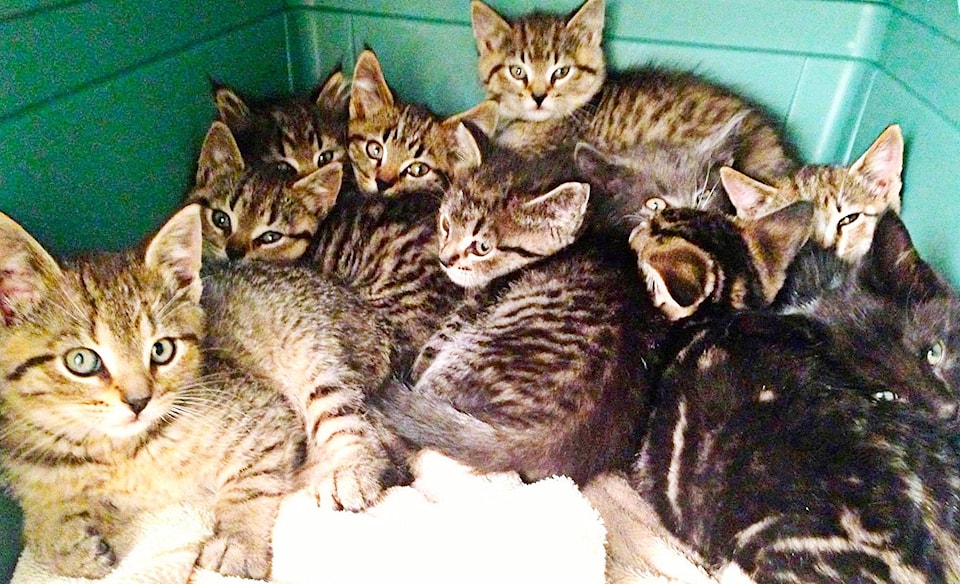LANGLEY - A box of skinny, sickly kittens has kick-started an effort to protect Langley's thousands of feral and stray cats.
In late 2013, a box of 10 kittens arrived at Langley Animal Protection Society (LAPS), rescued by a worker in Port Kells, near the Langley-Surrey border.
Dubbed the "jungle kittens," they were sent to LAPS foster volunteer Shelly Roche, who runs the wildly popular Tiny Kittens Facebook page.
Roche documented the process of caring for the kittens on her live internet stream, and it was a lot more intensive than most of her fostering jobs. The kittens had ringworm and upper respiratory infections, and required a lot of care.
"It wasn't just watching cute kittens," Roche said.
Kim McFarland came on board after adopting two of the kittens.
The two women realized there had been a lot of other cats coming from the same industrial area, as far back as 2008, according to LAPS records.
Worse, they had almost all been suffering from a wide array of diseases on arrival. "So the colony here was sick," said McFarland.
McFarland and Roche decided to team up and launched Operation Jungle Moms to try to catch the mother of the litter of 10.
The project kept going all year, has attracted around 30 additional volunteers and has widened its scope to a full "trap-neuter-release" program.
Programs like this, usually dubbed TNRs, have been run around Langley for years, often initiated by independent individuals or small groups. They identify a colony of feral cats, feed the animals and then attempt to trap them, have them fixed and release them again. Without the constant addition of new litters of kittens, a colony should shrink on its own.
The aim is to end the cycle of disease among feral cats, and to reduce their overall numbers humanely.
"This is a terrible place to live if you're a cat," Roche said of the industrial area in Port Kells.
Near a waste-transfer station, the area offers food in the form of rats, but it is also home to coyotes that prey on cats, there is a lot of traffic and diseases have been spreading for years.
Feral cats have very short life expectancies compared to their domestic counterparts, said Sean Baker, manager of the Patti Dale Animal Shelter in Aldergrove.
A feral cat can expect to live just four years, compared to 13 to 15 for an indoor pet.
Because cats can start giving birth to litters at six months of age, colonies can grow quickly. A rule of thumb is that there is up to one feral cat for every 10 residents, said Baker. That would mean about 12,000 to 14,000 in the Langley area.
Roche and McFarland set up a feeding station under some trees near a railway spur line. They tried to draw in cats to the feeding area, then trap them and remove them for medical treatment.
"They were very trap-shy, they're very smart," said Roche.
"It was just Shelly and me for about two months," McFarland added.
They would come out at night and monitor the trap through night-vision cameras from a nearby car. They had to do all their work at night because the feral cats are almost entirely nocturnal.
Their adventures included some attention from the RCMP - "So you're the two suspicious females I've been called about," one officer joked - along with visits to the trap by raccoons and skunks.
They caught about half a dozen feral cats over the course of the year, along with one clearly terrified pet cat, either lost or abandoned; he jumped into a volunteer's arms when approached.
But many of the cats avoided the trap altogether, including a number of heavily pregnant mothers.
Operation Jungle Moms needs two things now, including time to train existing volunteers (dealing with feral cats is difficult, as they are liable to lash out and have health issues). Also, they need to help LAPS raise money for its cat isolation facility. Dubbed the "isoasis," it is expected to cost about $540,000.
